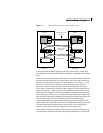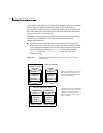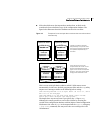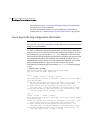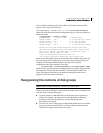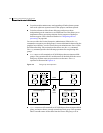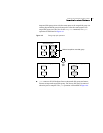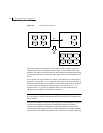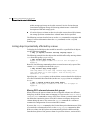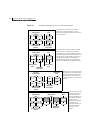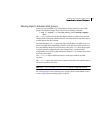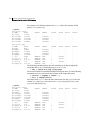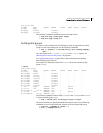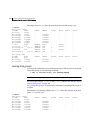
199Creating and administering disk groups
Reorganizing the contents of disk groups
must recover the disk group manually as described in the section “Recovery
from Incomplete Disk Group Moves” in the chapter “Recovery from Hardware
Failure” of the Veritas Volume Manager Troubleshooting Guide.
Limitations of disk group split and join
The disk group split and join feature has the following limitations:
■ Disk groups involved in a move, split or join must be version 90 or greater.
See “Upgrading a disk group” on page 208 for more information on disk
group versions.
■ The reconfiguration must involve an integral number of physical disks.
■ Objects to be moved must not contain open volumes.
■ Disks cannot be moved between CDS and non-CDS compatible disk groups.
■ Moved volumes are initially disabled following a disk group move, split or
join. Use the
vxrecover -m and vxvol startall commands to recover and
restart the volumes.
■ Data change objects (DCOs) and snap objects that have been dissociated by
Persistent FastResync cannot be moved between disk groups.
■ Veritas Volume Replicator (VVR) objects cannot be moved between disk
groups.
■ For a disk group move to succeed, the source disk group must contain at
least one disk that can store copies of the configuration database after the
move.
■ For a disk group split to succeed, both the source and target disk groups
must contain at least one disk that can store copies of the configuration
database after the split.
■ For a disk group move or join to succeed, the configuration database in the
target disk group must be able to accommodate information about all the
objects in the enlarged disk group.
■ Splitting or moving a volume into a different disk group changes the
volume’s record ID.
■ The operation can only be performed on the master node of a cluster if
either the source disk group or the target disk group is shared.
■ In a cluster environment, disk groups involved in a move or join must both
be private or must both be shared.
■ When used with objects that have been created using the Veritas Intelligent
Storage Provisioning (ISP) feature, only complete storage pools may be split
or moved from a disk group. Individual objects such as application volumes



